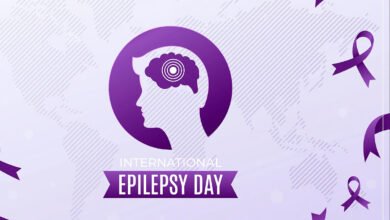100 Years After the Declaration on the Rights of the Child: Progress, Challenges, and the Path Forward

A century ago, the Declaration on the Rights of the Child laid the foundation for a global commitment to protecting and nurturing children. Drafted by Eglantyne Jebb, founder of Save the Children, and adopted by the League of Nations in 1924, this declaration was a groundbreaking recognition of children’s inherent rights to safety, education, health, and care. Over the past 100 years, this vision has evolved, inspiring international frameworks and national policies. Yet, the journey toward fully realizing these rights remains unfinished.
A Historical Perspective
The 1924 Declaration marked the first formal acknowledgment of children as rights-holders. Jebb’s five-point document emphasized the duty of adults to prioritize children’s needs. This ethos was strengthened in 1959 with the United Nations’ Declaration of the Rights of the Child, which expanded on these principles.
The landmark Convention on the Rights of the Child (CRC), adopted by the United Nations in 1989, provided a legally binding framework, affirming children’s rights to survival, development, protection, and participation. Ratified by 196 countries, the CRC is the most universally accepted human rights treaty, underscoring its significance.
Progress Over the Century
1. Global Education
The expansion of education has been a major success story. Global literacy rates have increased dramatically, with primary education becoming near-universal in many regions. Programs like UNICEF’s Education for Every Child and UNESCO’s Education 2030 Agenda have played pivotal roles.
2. Health and Survival
Child mortality rates have declined significantly due to advances in healthcare, nutrition, and sanitation. Initiatives such as the WHO’s Expanded Programme on Immunization (EPI) have saved millions of lives. Diseases like polio have been eradicated in many parts of the world, and efforts to combat malaria, HIV/AIDS, and malnutrition continue to gain momentum.
3. Legal Protections
Many countries have enacted laws prohibiting child labor, trafficking, and early marriage. Child protection systems have been strengthened, with governments investing in social services and community-based programs to safeguard children from violence and exploitation.
4. Humanitarian Responses
Organizations like UNICEF, Save the Children, and the Red Cross have provided critical support in conflict zones and during natural disasters, ensuring children’s access to food, shelter, and education.
Challenges and Shortcomings
Despite these gains, numerous challenges persist:
1. Inequality in Access
Millions of children, especially in low-income countries, are still deprived of basic rights. Rural areas, conflict zones, and marginalized communities face systemic barriers to education, healthcare, and protection.
2. Child Labor and Exploitation
The International Labour Organization (ILO) estimates that over 160 million children are engaged in child labor, with millions more at risk of trafficking and sexual exploitation.
3. Conflict and Displacement
Children in war-torn regions bear the brunt of violence. The Syrian crisis, Rohingya exodus, and conflicts in Africa have displaced millions of children, robbing them of stability and opportunity.
4. Climate Change
Climate-related disasters disproportionately affect children, with many forced to migrate or live in precarious conditions.
5. Digital Threats
While the digital revolution has brought opportunities, it has also exposed children to cyberbullying, exploitation, and privacy violations.
The Role of International Organizations and Governments
1. United Nations Agencies
- UNICEF: The cornerstone of global child advocacy, UNICEF provides humanitarian aid, champions policy reforms, and funds education, health, and protection programs.
- WHO: Leads global health initiatives for children, including immunizations and combating malnutrition.
- UNHCR: Protects child refugees, ensuring their rights in displacement contexts.
2. Regional Efforts
- The African Charter on the Rights and Welfare of the Child (1990) emphasizes child rights within African contexts, addressing unique regional challenges like child soldiers.
- In Europe, the Council of Europe Strategy for the Rights of the Child promotes inclusive policies and safeguards against exploitation.
3. National Policies
Countries have integrated child rights into legal frameworks. India’s Right to Education Act, Brazil’s Child and Adolescent Statute, and Norway’s robust child welfare system exemplify progressive national efforts.
The Way Forward: Building on the Past, Bridging the Gaps
1. Address Inequalities
Ensure inclusive access to education, healthcare, and protection for all children, regardless of geography or socioeconomic status.
2. Strengthen Legal Frameworks
Governments must close gaps in child protection laws and enforce penalties for violators. International collaboration can combat cross-border exploitation.
3. Invest in Education
Innovative approaches like digital learning and community schools can reach underserved areas. Governments should prioritize funding for quality education.
4. Tackle Climate Change
Policies must consider children’s vulnerabilities, focusing on disaster preparedness and sustainable development.
5. Leverage Technology
Harness digital tools for education and advocacy while strengthening safeguards against online threats.
6. Support Grassroots Movements
Empowering communities to advocate for children’s rights fosters local ownership and long-term sustainability.
Conclusion
A century after the first Declaration on the Rights of the Child, we have made significant strides but must intensify our efforts to meet the challenges of today and tomorrow. Ensuring the rights and well-being of children is not merely a moral imperative; it is an investment in the future of our societies.
As we look ahead, let us recommit to building a world where every child, regardless of circumstance, has the opportunity to thrive. The promise of the past 100 years must guide our actions in the next century—and beyond.





